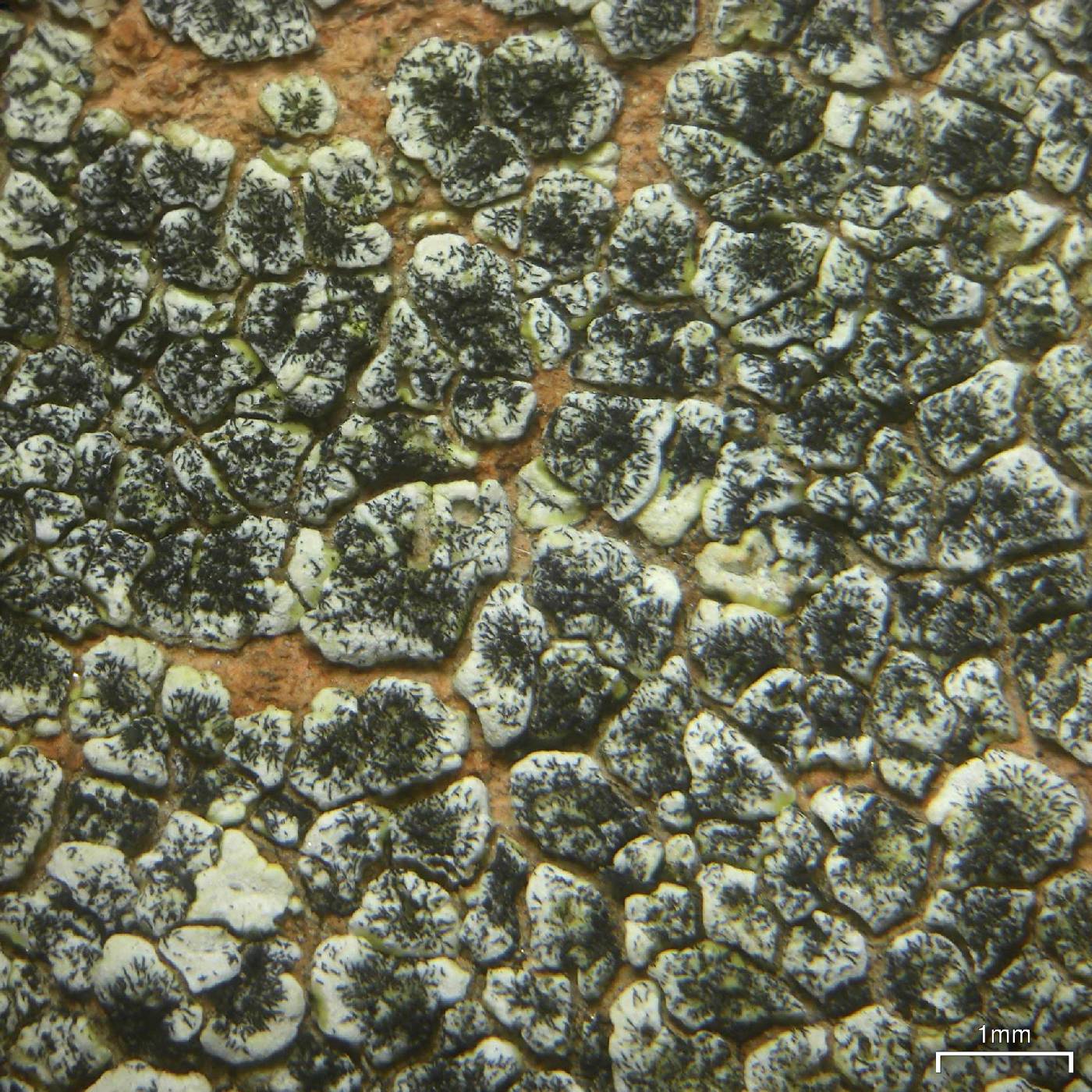
Consortium of Lichen Herbaria
- building a Global Consortium of Bryophytes and Lichens as keystones of cryptobiotic communities -
- Home
- Search
- Images
- Species Checklists
- US States: O-Z >
- US National Parks
- Central America
- South America
- US National Parks
- Southern Subpolar Region
|
|
|
|
Family: Phaeococcomycetaceae
|
Nash, T.H., Ryan, B.D., Gries, C., Bungartz, F., (eds.) 2004. Lichen Flora of the Greater Sonoran Desert Region. Vol 2. Hyphal strands: superficial, black; in young infections strands frequently arranged in groups and then several stands markedly radiating, but in older infections strands dispersed or only loosely radiating; each strand usually formed by a main axis with few lateral, short ramifications; main strands: plurihyphal (stromatic), dark brown, with 2-4 rows of cells, convex, about 250-400 µm long and 1220(-30) µm wide, attenuated towards the extreme; lateral branches: dark brown, mostly 20-60 µm long and about 610 µm thick, formed by 1-2 rows of cells, surface granular Ascomata: superficial, black, mostly elongate, recognizable as thickenings of the hyphal strands, 60-150 µm long and 25-40 µm wide, arising mostly towards the center of each group of radiating strands, where a large, elongate or ±stellate cluster of ascomata is frequently formed, up to 250 µm in diam, later on ascomata separating by fragmentation of the strand and dispersed internal structure: dark brown externally, with a granular pigment, cells paler to hyaline towards the center; cells: 4-6 µm in diam. trum: I-, K/I+ blue asci: subglobose to broadly ovate, 25-30 x 18-25 µm, 8-spored ascospores: pale brown initially and becoming brown, 1-septate, ellipsoid or obovate, with rounded apices, slightly constricted at the septum, halonate when young, without a visible halo, 8-11 x 4-7 µm; wall: with a granular surface when mature. Hosts: on the thallus and ascomata of yellow Acarospora species, more rarely on brown Acarospora species, and then mainly when growing side by side or intermingled with yellow species World distribution: SW Asia (Saudi Arabia), Macaronesia (Canary Islands), and North America (Sonoran region) Sonoran distribution: Arizona, Baja California, Baja California Sur, and Chihuahua. Notes: In Lichenostigma subradians the radiating arrangement of the strands may be less distinct in older infections and on areoles with a sharp relief, the strands following mostly the tiny ridges on the surface; some of the samples examined consisted only of scattered ascomata and hyphal strands, without a radial arrangement. A few specimens growing on Acarospora (Hafellner 37107, 37100 and 37104), in which the strands are clustered in dense, radial groups, form well delimited black orbicular patches, and have been excluded. These merit critical study based when more material is available. In L. elongata the strands are simple or with few irregular branches, and the ascospores are larger. |
Powered by Symbiota












